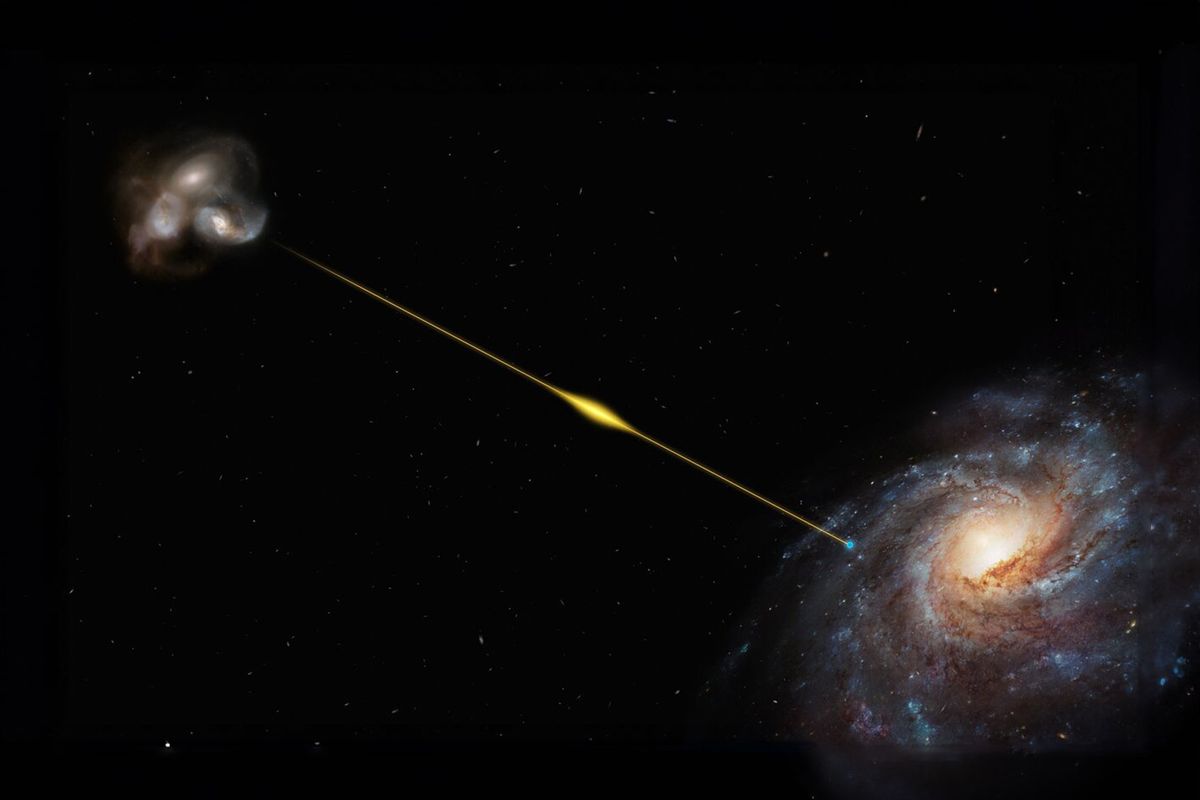Imagine a radio emission so powerful that it released as much energy in a fraction of a second as our Sun releases over 30 years. Yet unlike our massive and nearby Sun, this radio emission known as FRB 20220610A is tiny and comes from 8 billion light years away, as detailed in the journal Science. Its source is in fact a mystery, as this is a fast radio burst (FRB): an intense, extremely brief flash of radio emission. Intriguingly, this is the most distant FRB ever discovered.
"The FRB we discovered emitted the same amount of energy that the Sun emits in 30 years."
"We now know that energetic FRBs can be produced in the distant Universe," study co-author Ryan Shannon, a scientist at Swinburne University of Technology's Centre for Astrophysics and Supercomputing, told Salon by email. "This demonstrates that FRBs are indeed extreme." Shannon detailed how the team of researchers utilized the Australian Square Kilometre Array Pathfinder (ASKAP) in order to pinpoint a burst that they suspected might have originated from a very distant galaxy. After this was accomplished, they then utilized the Very Large Telescope in order to locate the host galaxy, at which point they "saw that the light from it had been stretched by a factor of two, meaning the burst had traveled 8 billion years between when it was emitted and when we received it at ASKAP. The burst was also very bright and energetic."
Perhaps most notably, "The FRB we discovered emitted the same amount of energy that the Sun emits in 30 years."
Shannon broke down the significance of this discovery.
"Our study challenges models for FRB emission," Shannon explained. "The most likely source is a hyper magnetized neutron star (a magnetar), a dense stellar corpse the mass of the sun, the size of a small city, and magnetic field strengths a trillion times stronger than that of an MRI machine. Our study challenges models for how the pulses are produced as it shows [the] maximum energy an FRB could have is higher than previously thought."
The authors also traced the FRB to what seems to be a group of two or three galaxies that are in the process of merging. This further reinforces the popular theory that FRBs are caused by magnetars. It also makes FRB 20220610A one of nearly 50 FRBs that have been successfully traced back to their points of origin. Nearly half of those were identified by ASKAP.
Perhaps one of the most seemingly bold claims made by the researchers — who hailed from countries as diverse as Australia, the United States, the Netherlands, Japan and Chile — is that the discovery of this particular FRB will do more than simply tell us that FRBs can come from very distant parts of the universe. Additionally, they point out that their findings with FRB 20220610A actually make it possible to do something scientists previously doubted could ever be done: Measure the "missing" matter between galaxies and thereby "weigh" the Universe.
Want more health and science stories in your inbox? Subscribe to Salon's weekly newsletter Lab Notes.
"This relationship tells us the amount of matter there is in the Universe, and allows us to weigh it."
"The FRB signal is imprinted with the signal of all the gas they travel through," Shannon pointed out. "As the FRB passes through gas, it is subtly slowed down in a way we can measure when we detect the burst. We can use this to measure all of the gas in between where the FRB came from an us." Shannon added that this means everything - the cosmic web has diffuse gas between galaxies that scientists cannot detect any other way. "By studying FRB signals we are able to see that the amount of gas they travel through depends on how far away the bursts came from. This relationship tells us the amount of matter there is in the Universe, and allows us to weigh it. Our discovery paves the way to do this in the frontiers of the Universe."
In a statement, Shannon also elaborated on what FRB 20220610A does not prove.
“While we still don’t know what causes these massive bursts of energy, the paper confirms that fast radio bursts are common events in the cosmos and that we will be able to use them to detect matter between galaxies, and better understand the structure of the Universe,” Shannon wrote in that statement. When speaking with Salon, he was very clear about his enthusiasm for the implications of this discovery about FRB 20220610A in terms of future scientific research.
"We're excited about the future of the field and discovering more distant FRBs," Shannon explained. "We are developing more sensitive FRB search systems for ASKAP and look forward to following them up with the VLT to answer fundamental questions about the structure of the Universe."



Shares